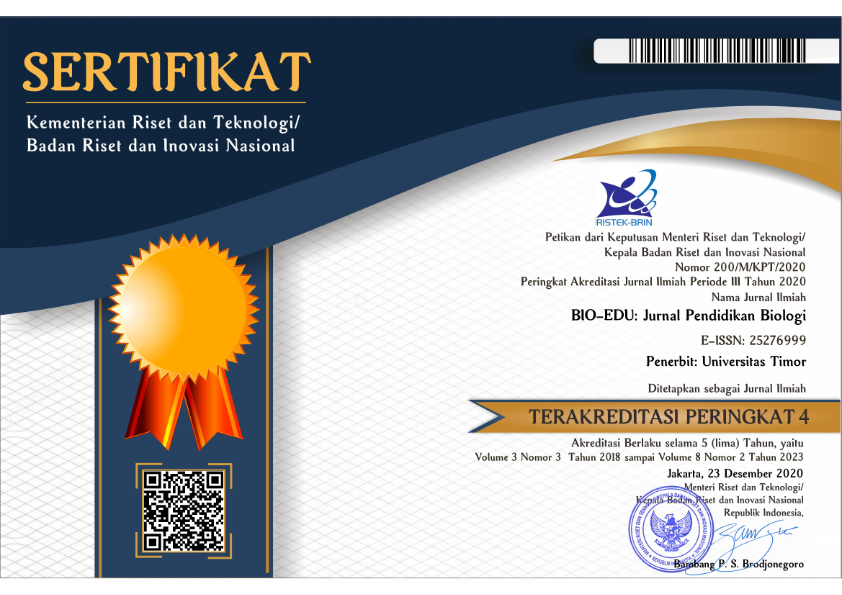Skrining Fitokimia dan Potensi Antidiabetes Ekstrak Etanol Herba Ciplukan (Physalis Angulata L) pada Tikus Putih (Rattus Novergicus) yang Diinduksi Aloksan
DOI:
https://doi.org/10.32938/jbe.v4i3.422Keywords:
Antidiabetes, Physalis angulata L, Rattus norvegicus, Fitokimia, AloksanAbstract
The purpose of this study to determine the anti-diabetic potential of ciplukan herbal ethanol extract (Physalis angulata L) in white rats (Rattus norvegicus) induced alloxan given intraperitoneally and comparing its effectiveness with glibenclamide. This study uses 5 groups namely giving aquadest as normal control, giving alloxan as a negative control, giving alloxan and glibenclamide as a positive control and the ethanol extract of ciplukan herbal with a dose of 150 mg/kg BB and 300 mg/kg BB. Blood glucose measurement performed on day 0 (three days after induction), day 7, and day 14. The results showed that ethanol extract of ciplukan herbal (Physalis angulata L) can lower blood glucose levekls. A dose of 150 mg/kg BB have percentage decrease in blood glucose levels on day 7 and day 14 respectively by 14.1%and 70.5%. dose of 300 mg/kg BB have a percentage decrease in blood glucose levels on day 7 and day 14 respectively by 70.5%.and 69.5%. a dose of 150 mg/kg BB is more effective as an anti-diabetic compared with a dose of 300 mg/kg BB. Ethanol extract of ciplukan herbal (Physalis angulata L) also has an activity to repair damaged pancreatic-β cells in rats (Rattus norvegicus) induced by alloxan.
Downloads
Published
Issue
Section
License
The Authors submitting a manuscript do so on the understanding that if accepted for publication, the copyright of the article shall be assigned to BIO-EDU: Jurnal Pendidikan Biologi and Departement of Biology Education, Universitas Timor as the publisher of the journal. Copyright encompasses rights to reproduce and deliver the article in all form and media, including reprints, photographs, microfilms, and any other similar reproductions, as well as translations.
BIO-EDU journal and Departement Biology Education, Universitas Timor, and the Editors make every effort to ensure that no wrong or misleading data, opinions, or statements be published in the journal. In any way, the contents of the articles and advertisements published in BIO-EDU are the sole and responsibility of their respective authors and advertisers.
Users of this website will be licensed to use materials from this website following the Creative Commons Attribution-ShareAlike 4.0 International License.



















